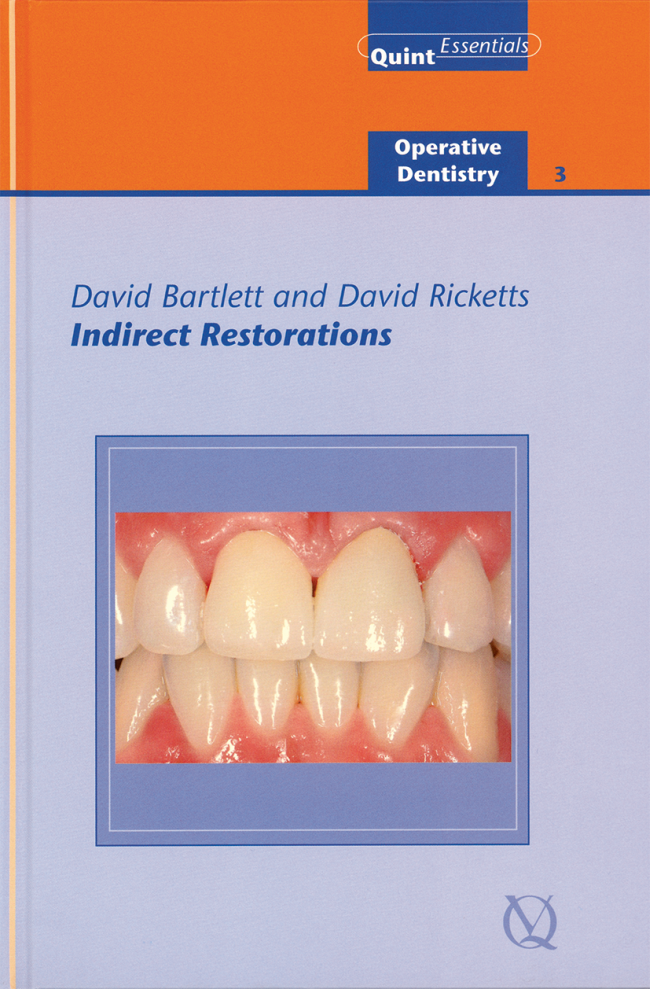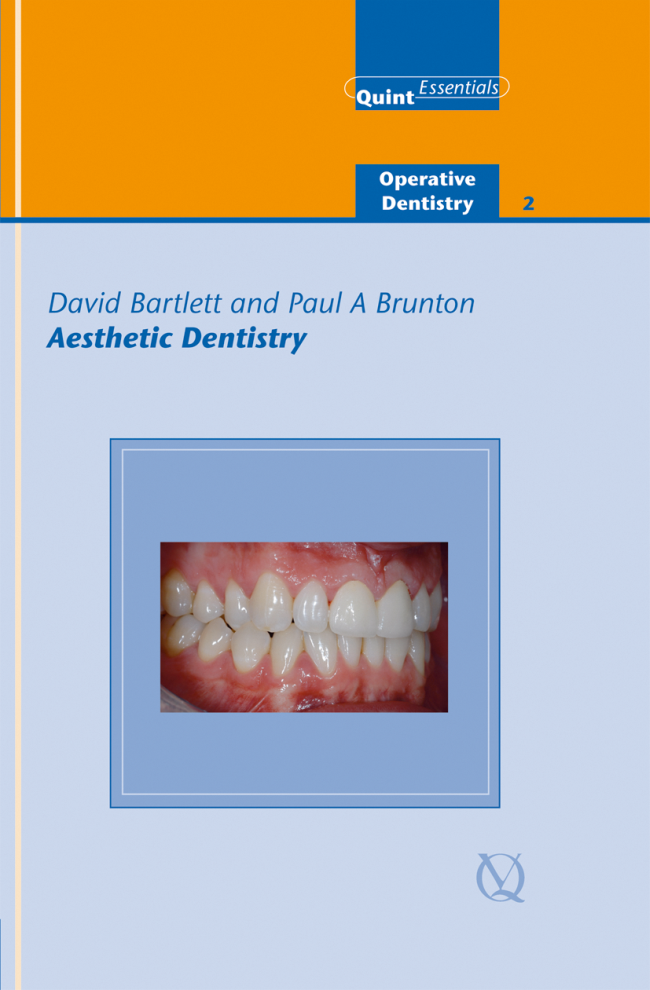The International Journal of Prosthodontics, 2/2025
DOI: 10.11607/ijp.8778, PubMed-ID: 38466570Seiten: 191-195, Sprache: EnglischMcSweeney, Jack / Bartlett, David W. / Varma, SachinPurpose: To determine the frequency of insert changes for combined maxillary and mandibular implant overdentures (IODs) using the Locator Legacy system and to assess the survival of dental implants with IODs. Materials and Methods: This retrospective audit reviewed clinical records with up to 12 years of follow-up from 785 patients who received IODs using the Locator system at a dental hospital. In total, 151 had a combined maxillary IOD opposed by a mandibular IOD and of those, 37 had data retrieved using a minimum data set. The frequency of insert change was recorded and descriptive analysis was provided by means and SDs for continuous variables. Frequencies of categorical values were reported as percentages. Results: In total, 222 implants were placed in 21 men and 16 women with a mean age of 67.5 years (SD 8.8). All patients were reviewed at least once. Maxillary and mandibular IODs experienced 1.9 (SD 2.0) and 1.2 (SD 1.2) mean insert changes per patient, respectively. The mean time (SD) between initial and first insert change for maxillary and mandibular IODs was 3.4 months (SD 3.2) and 6.4 months (SD 7.2) and between the first and second insert change was 9.9 months (SD 9.0) and 10.0 months (SD 8.3), respectively. Implant failure was 21.6% and 2.7% in the maxilla and mandible, respectively. Conclusions: Clinicians should anticipate the first insert change around 3 months for maxillary IODs and 6 months for mandibular IODs. Subsequently, the second insert change should be expected around 10 months for both maxillary and mandibular IODs.
Chinese Journal of Dental Research, 2/2021
DOI: 10.3290/j.cjdr.b1530421, PubMed-ID: 34219442Seiten: 95-103, Sprache: EnglischYu, Tian / Tao, Dan Ying / Lu, Hai Xia / Zhu, Jia Lin / Xie, Chun Yu / Bartlett, David / Feng, Xi PingObjective: To estimate the prevalence and distribution of tooth wear among groups of adolescents
and adults in Shanghai, China through an epidemiological survey, and explore the
associated factors.
Methods: Multistage, stratified, constant volume and cluster sampling methods were used in
an epidemiological survey conducted in Shanghai in 2014. The basic erosive wear examination
(BEWE) index was used to screen for tooth wear in different age groups: 12 years, 15
years, 18 to 35 years, 36 to 49 years and 50 to 74 years. A previously published questionnaire
collected information including dietary habits, oral hygiene habits and general conditions.
Results: This survey reports the results for 1806 participants in Shanghai. The prevalence
of tooth wear was 59.7% in adolescents (BEWE ≥ 1) and 93.1% in adults (BEWE ≥ 2). The
prevalence and severity of disease increased with age (P < 0.01). The teeth most susceptible
to wear were the central incisors and first molars. Multivariate analysis of covariance
(ANCOVA) results showed that soft drinks, alcoholic drinks, pickled vegetables and hard food,
gastroesophageal reflux disease (GERD), xerostomia and poor tooth brushing habits were
statistically correlated with tooth wear in different age groups.
Conclusion: The prevalence of tooth wear appears to be high in adolescents and adults in
Shanghai. Frequent consumption of soft or alcoholic drinks, GERD, xerostomia and poor
tooth brushing habits were positively associated with tooth wear in different age groups.
Schlagwörter: adolescents, adults, basic erosive wear examination index, epidemiological survey, tooth wear
Quintessenz Zahnmedizin, 3/2018
ProthetikSeiten: 270-283, Sprache: DeutschLoomans, Bas / Opdam, Niek / Attin, Thomas / Bartlett, David / Edelhoff, Daniel / Frankenberger, Roland / Benic, Goran / Ramseyer, Simon / Wetselaar, Peter / Sterenborg, Bernadette / Hickel, Reinhard / Pallesen, Ulla / Mehta, Shamir / Banerji, Subir / Lussi, Adrian / Wilson, NairnDer Beitrag fasst die europäische Konsensus-Leitlinie zur zahnärztlichen Therapie bei fortgeschrittenem Zahnhartsubstanzverlust zusammen. Er fokussiert auf die Definition von physiologischem versus pathologischem Zahnhartsubstanzverlust und empfiehlt, die Diagnostik, Prävention, Aufklärung und Überwachung auf die Ätiologie, die Art und das Ausmaß des pathologischen Zahnhartsubstanzverlustes sowie Mittel zu seiner Kontrolle auszurichten. Therapieentscheidungen werden von vielen Faktoren beeinflusst und sind sowohl vom Schweregrad und von den klinischen Auswirkungen des Zahnhartsubstanzverlustes als auch von den Wünschen des Patienten abhängig. Idealerweise werden restaurative Maßnahmen so lange wie möglich hinausgezögert. Wenn eine solche Intervention indiziert ist und der betroffene Patient zustimmt, wird ein konservierender minimalinvasiver Ansatz mit ergänzenden Präventionsmaßnahmen empfohlen. Beispielhaft werden adhäsive minimalinvasive Therapiekonzepte vorgestellt.
Schlagwörter: Zahnhartsubstanzverlust, Entscheidungsfindung, restaurative Behandlung, direkte Restauration, indirekte Restauration
The Journal of Adhesive Dentistry, 2/2017
DOI: 10.3290/j.jad.a38102, PubMed-ID: 28439579Seiten: 111-119, Sprache: EnglischLoomans, Bas / Opdam, Niek / Attin, Thomas / Bartlett, David / Edelhoff, Daniel / Frankenberger, Roland / Benic, Goran / Ramseyer, Simon / Wetselaar, Peter / Sterenborg, Bernadette / Hickel, Reinhard / Pallesen, Ulla / Mehta, Shamir / Banerji, Subir / Lussi, Adrian / Wilson, NairnThis paper presents European expert consensus guidelines on the management of severe tooth wear. It focuses on the definition of physiological vs pathological tooth wear and recommends diagnosis, prevention, counseling, and monitoring aimed at elucidating the etiology, nature, rate and means of controlling pathological tooth wear. Management decisions are multifactorial, depending principally on the severity and effects of the wear and the wishes of the patient. Restorative intervention is typically best delayed as long as possible. When such intervention is indicated and agreed upon with the patient, a conservative, minimally invasive approach is recommended, complemented by supportive preventive measures. Examples of adhesive, minimum-intervention management protocols are presented.
Schlagwörter: tooth wear, decision making, restorative treatment, direct, indirect
The International Journal of Prosthodontics, 1/2017
Seiten: 10, Sprache: EnglischBartlett, DavidThe International Journal of Prosthodontics, 2/2015
DOI: 10.11607/ijp.4154, PubMed-ID: 25822306Seiten: 181-187, Sprache: EnglischOlley, Ryan C. / Moazzez, Rebecca / Bartlett, DavidPurpose: To evaluate, in situ, the penetration of deposits formed within the subsurface of dentin samples treated with desensitizing dentifrices designed to occlude dentin tubules compared to two controls.
Materials and Methods: Twenty-eight healthy participants wore left and right intraoral appliances, each retaining four human dentin samples, for two periods of 4 days. Samples were power-brushed, outside the mouth, twice daily with test products (dentifrices containing 8% strontium or 8% arginine) or control (1,450 ppm NaF or water) and subjected to an agitated grapefruit juice acid challenge on days 3 and 4. Eighteen dentin samples were randomly selected from each treatment group and were dry fractured for scanning electron microscopy and energy-dispersive x-ray spectroscopy analysis.
Results: The proportion of cross-sectioned dentin tubules with subsurface occlusion (occluded to a mean of 5 ± 2 μm, range: 1 to 9 μm below the surface) for the 8% strontium group on days 1 and 2 (pre-acid) was 82% (SD: 9%, 95% confidence interval [CI] = 78% to 86%) and on days 3 and 4 (post-acid) was 88% (SD: 10%, CI = 83% to 93%). For 8% arginine on days 3 and 4 (post-acid), the proportion was 78% (SD: 8%, CI = 74% to 82%). These results were statistically significant compared to those for controls (P .01). The 8% arginine on days 1 and 2 (pre-acid) and water and control paste on all days revealed no subsurface deposit.
Conclusions: Within the limitations of this study, cross-sectional SEM analysis suggested strontium and arginine dentifrices occlude tubules subsurface in dentin compared to negative controls following acid challenge. The desensitizing dentifrices elicit subsurface changes that may potentiate their effects for the management of dentin hypersensitivity, particularly for patients who consume acidic beverages.
The International Journal of Prosthodontics, 5/2014
DOI: 10.11607/ijp.3956, PubMed-ID: 25191883Seiten: 425-426, Sprache: EnglischAustin, Rupert S. / Stenhagen, Kjersti Refsholt / Hove, Lene Hystad / Tveit, Anne Bjørg / Moazzez, Rebecca V. / Bartlett, David W.Purpose: To compare single-application fluoride formulations on enamel erosion and erosion-abrasion in vitro.
Materials and Methods: Enamel specimens were pretreated with either sodium, tin, titanium, or sodium/calcium fluoride and subjected to either an erosion model or an erosion-abrasion model, after which optical profilometry was used to measure enamel step height loss.
Results: For erosion, the titanium fluoride (P .001) reduced enamel loss, whereas the calcium, tin, and sodium treatments showed no significant effects (P > .05). For erosion-abrasion, the titanium fluoride increased enamel loss in comparison to control (P .001).
Conclusions: Titanium fluoride has differing effects on enamel loss from erosion and erosionabrasion models.
The International Journal of Prosthodontics, 1/2014
DOI: 10.11607/ijp.3585, PubMed-ID: 24392484Seiten: 87-90, Sprache: EnglischEstafan, Ashraf / Bartlett, David / Goldstein, GaryBoth causation and management of noncarious cervical lesions (NCCLs) (abfractions, wedge-shaped defects, stress-induced cervical lesions, and cervical erosion) remain debatable. A survey of clinicians' perceptions was therefore conducted at a recent professional meeting to determine optimal approaches to NCCL management. Examples of lesions differing in depth (1, 2, and 3 mm) were presented as being either sensitive or nonsensitive, and participants recorded their responses to the presented individual scenarios. This report provides information regarding correlations between increases in lesion depth, lesion sensitivity, and professionals' willingness to restore them. It was also noted that decisions to ensure mechanical retention positively influenced estimates for restoration longevity. Int J Prosthodont 2014;27:87-90. doi: 10.11607/ijp.3585
The International Journal of Prosthodontics, 1/2009
PubMed-ID: 19260425Seiten: 35-42, Sprache: EnglischSpijker, Arie Van't / Rodriguez, Jose M. / Kreulen, Cees M. / Bronkhorst, Ewald M. / Bartlett, David W. / Creugers, Nico H. J.Purpose: The aim of this study was to investigate data on the prevalence of tooth wear in adults and assess possible correlations using a systematic review.
Materials and Methods: A search of the literature, using PubMed and the Cochrane Library, from January 1980 to July 2007 was made using keywords "tooth + wear"; "dental + attrition + prevalence"; "dental + wear + prevalence"; "erosion + prevalence"; and "abrasion + prevalence." References were independently screened for inclusion and exclusion by two investigators and Cohen Kappa was used as the measure of agreement. Data were collected and converted into the Smith and Knight Tooth Wear Index.
Results: One hundred eighty-six references were initially selected and subjected to the systematic review procedure; 13 survived the inclusion procedure. Four articles were suitable for regression analysis at tooth level (R2 = .593) and 3 at subject level (R2 = .736), using "age and age squared" and "age squared" as variables, respectively. Six studies reported males having significantly more tooth wear than females.
Conclusion: The predicted percentage of adults presenting with severe tooth wear increases from 3% at the age of 20 years to 17% at the age of 70 years. Increasing levels of tooth wear are significantly associated with age.
The International Journal of Prosthodontics, 2/2007
PubMed-ID: 17455441Seiten: 181-182, Sprache: EnglischHassan, Lamees / Wilson, Ron / Bartlett, DavidThe aim of this study was to measure differences in oral pH after subjects drank carbonated and noncarbonated acidic soft drinks. Oral pH was measured in 17 subjects at 4 oral sites with beetrode electrodes after each subject drank 50 mL of noncarbonated and carbonated blackcurrant beverages. There were no statistical differences for either beverage regarding the time taken to recover a pH of 5.5, 6.0, and 6.5. Oral pH recovered to 6.5 within 90 seconds with both drinks. The median lowest pH recorded after 30 seconds at the 4 sites for both drinks was > pH 4.9, but there was no statistical difference in the clearance between the drinks. The implication may be that carbonation is not directly responsible for the erosive potential of different beverages.






